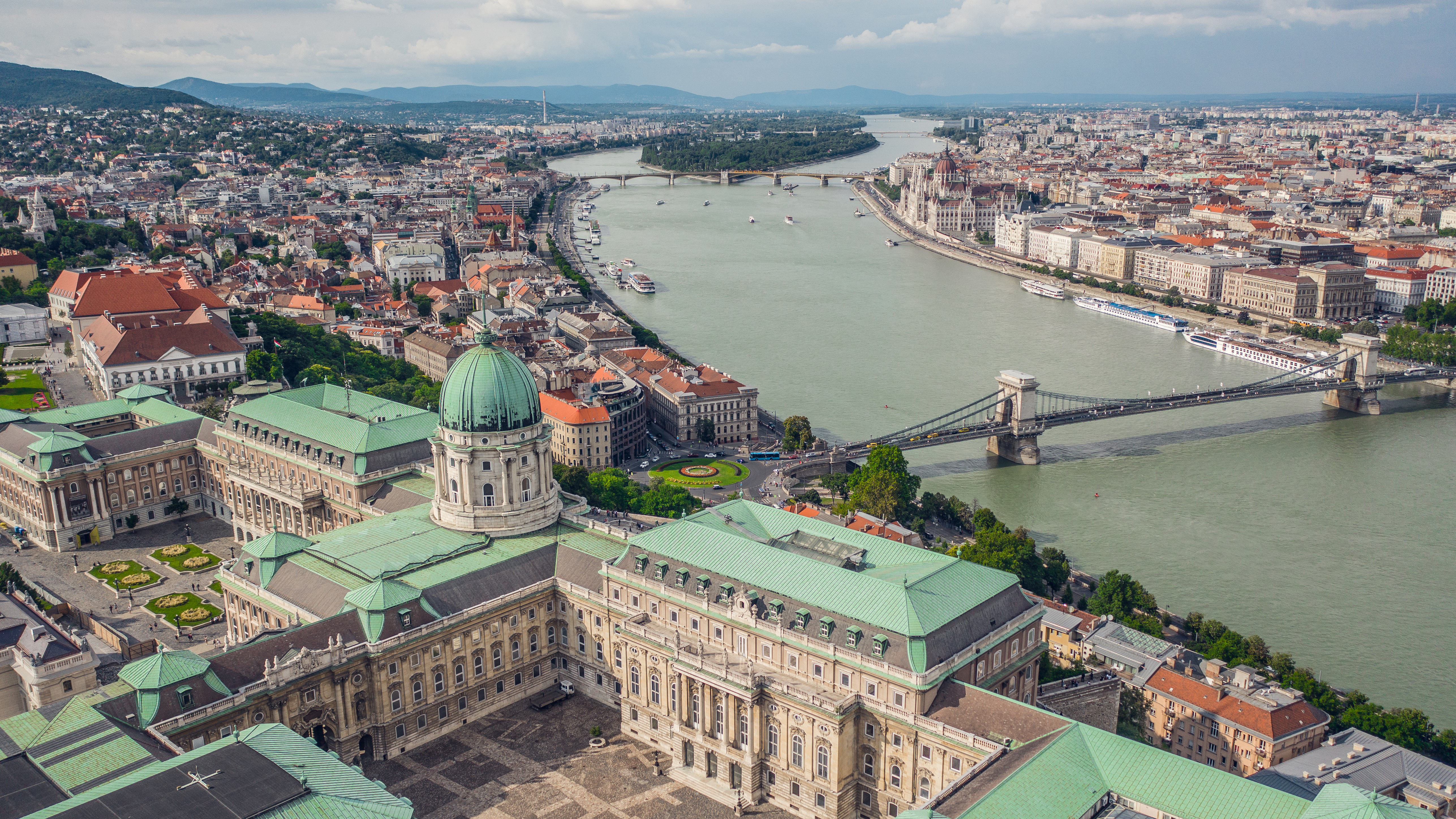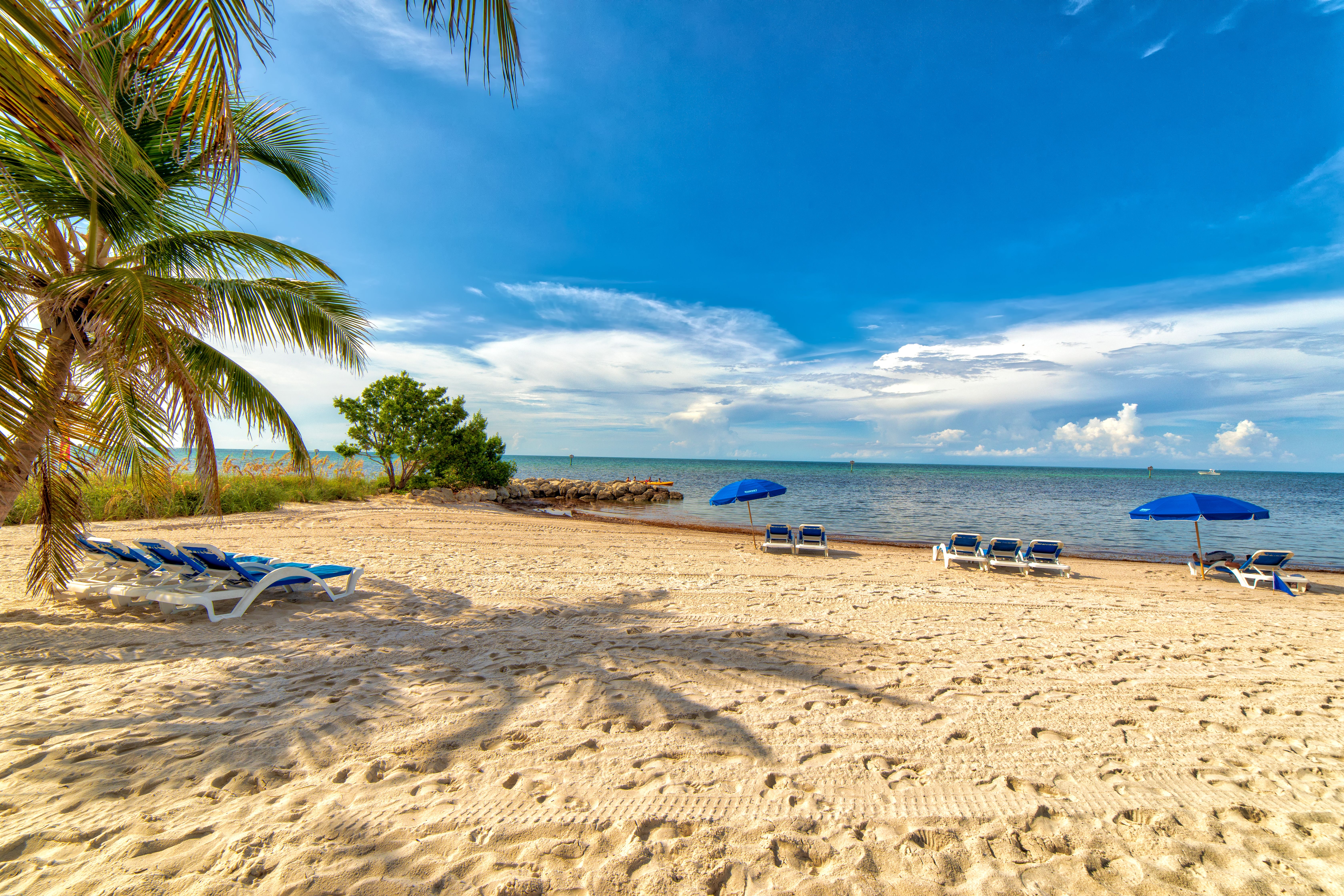23 Places Where Nature Has Reclaimed Abandoned Cities
In a world of ever-expanding cities and rapid technological progress, it’s easy to forget that nature has its own timeline—one that stretches far beyond human ambition. But when civilization retreats, nature doesn’t hesitate to reclaim what was once hers. Across the globe, once-thriving cities now lie in eerie silence, their abandoned structures slowly crumbling under the relentless march of greenery, wildlife, and time itself. Originally, we set out to explore 13 of these lost cities, but the sheer number of stunning examples compelled us to expand our list to 21 breathtaking places where nature has reclaimed the ruins of human ambition. From ghost towns swallowed by forests to entire islands overtaken by jungle, these places offer a hauntingly beautiful glimpse into what happens when the natural world takes back control. Join us on a journey through these forgotten cities, where vines creep over concrete, animals roam freely, and time seems to stand still. Each tells a unique story of human departure and nature’s quiet, unstoppable resurgence.
1. Pripyat, Ukraine: A Ghost Town in the Shadow of Chernobyl
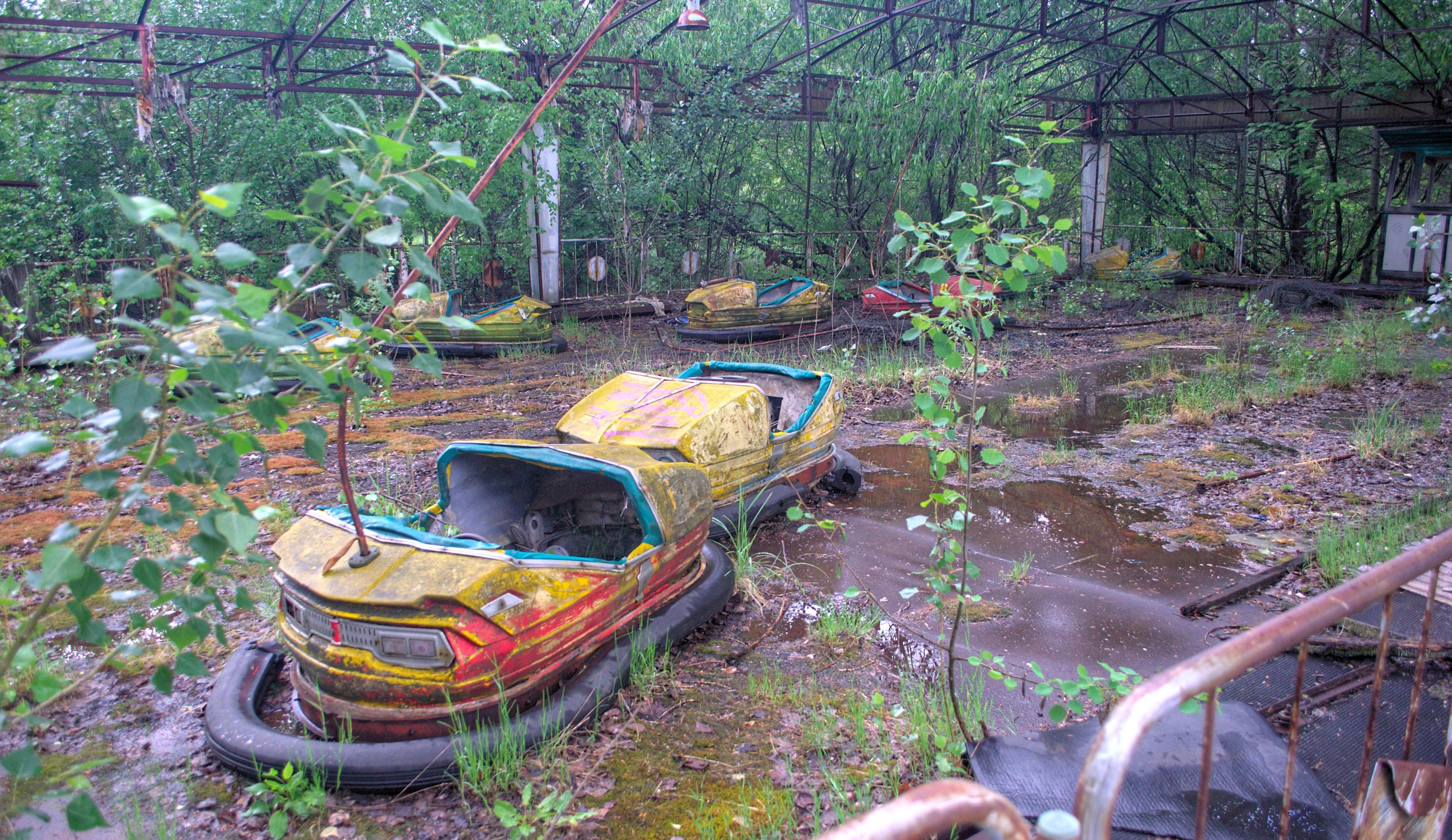
Pripyat, once a thriving city in Ukraine, now stands as a chilling testament to the power of nature to reclaim its own. Abandoned in the wake of the Chernobyl disaster in 1986, Pripyat's buildings are now shrouded in vines, and its streets are carpeted with moss and wildflowers. The city was evacuated in haste, leaving behind a snapshot of life frozen in time. In the absence of human activity, wildlife has returned in abundance. Wolves, boars, and even endangered species like the European bison roam freely, adapting to the radioactive environment. This resurgence of biodiversity highlights nature's resilience and its ability to adapt to even the most hostile conditions. Pripyat serves as a poignant reminder of the delicate balance between human activity and the natural world, and how quickly the latter can reclaim its territory when left undisturbed.
2. Kolmanskop, Namibia: The Desert's Encroachment
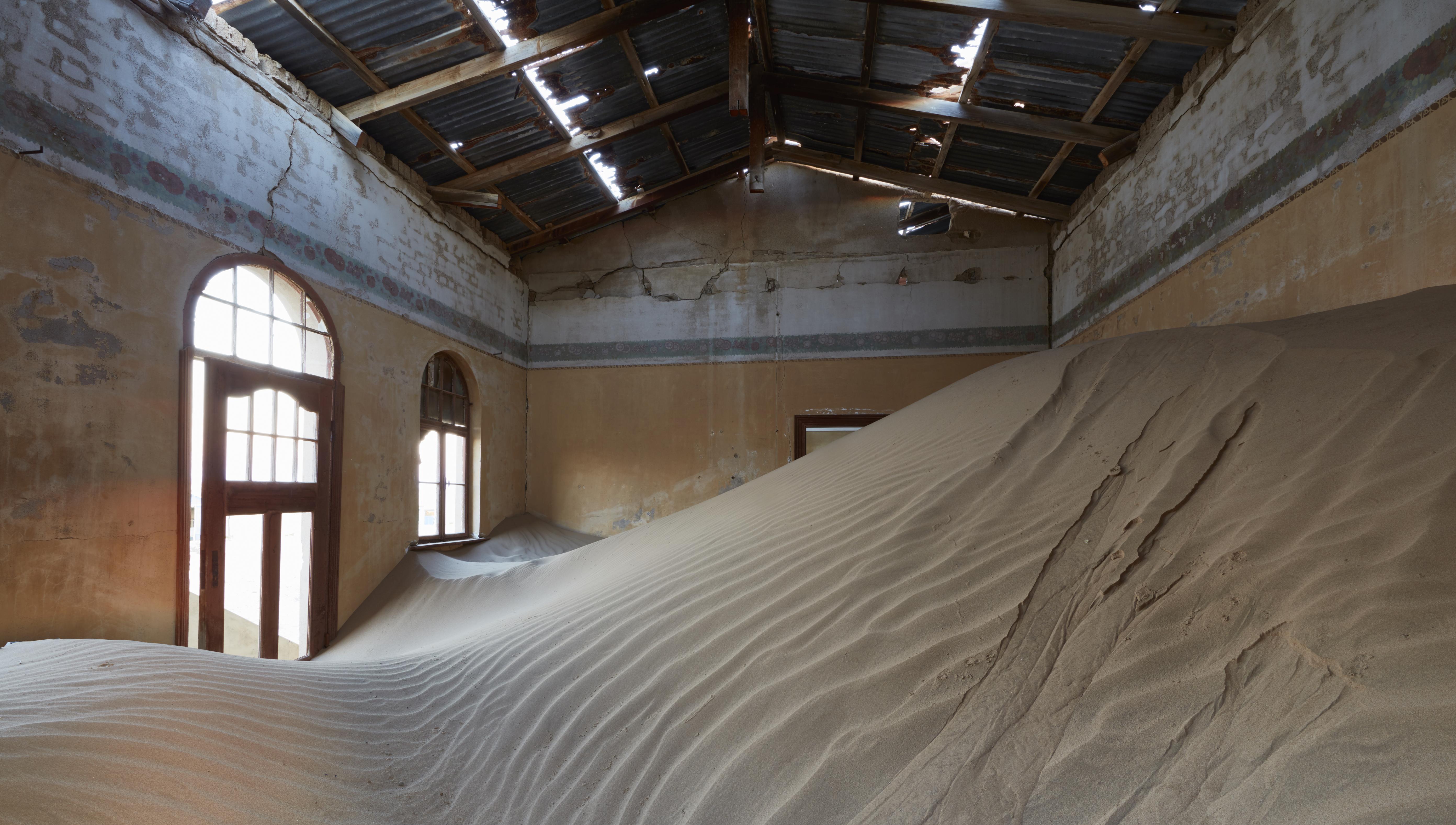
Kolmanskop, a former diamond mining town in Namibia, offers a striking example of nature's ability to reclaim man-made structures. Once a bustling settlement during the diamond rush of the early 20th century, Kolmanskop was abandoned when the diamonds ran out. Today, the town is engulfed by the Namib Desert, with sand dunes spilling into the remnants of once-opulent homes and communal buildings. The relentless desert winds have transformed Kolmanskop into a surreal landscape where sand fills rooms and corridors, creating an ever-shifting canvas of natural art. The encroachment of the desert serves as a powerful metaphor for nature's persistence and the impermanence of human achievements. As the town slowly disappears beneath the sands, it becomes a living museum of history and a testament to the enduring power of nature.
3. Hashima Island, Japan: The Ghostly Remnants of Industry
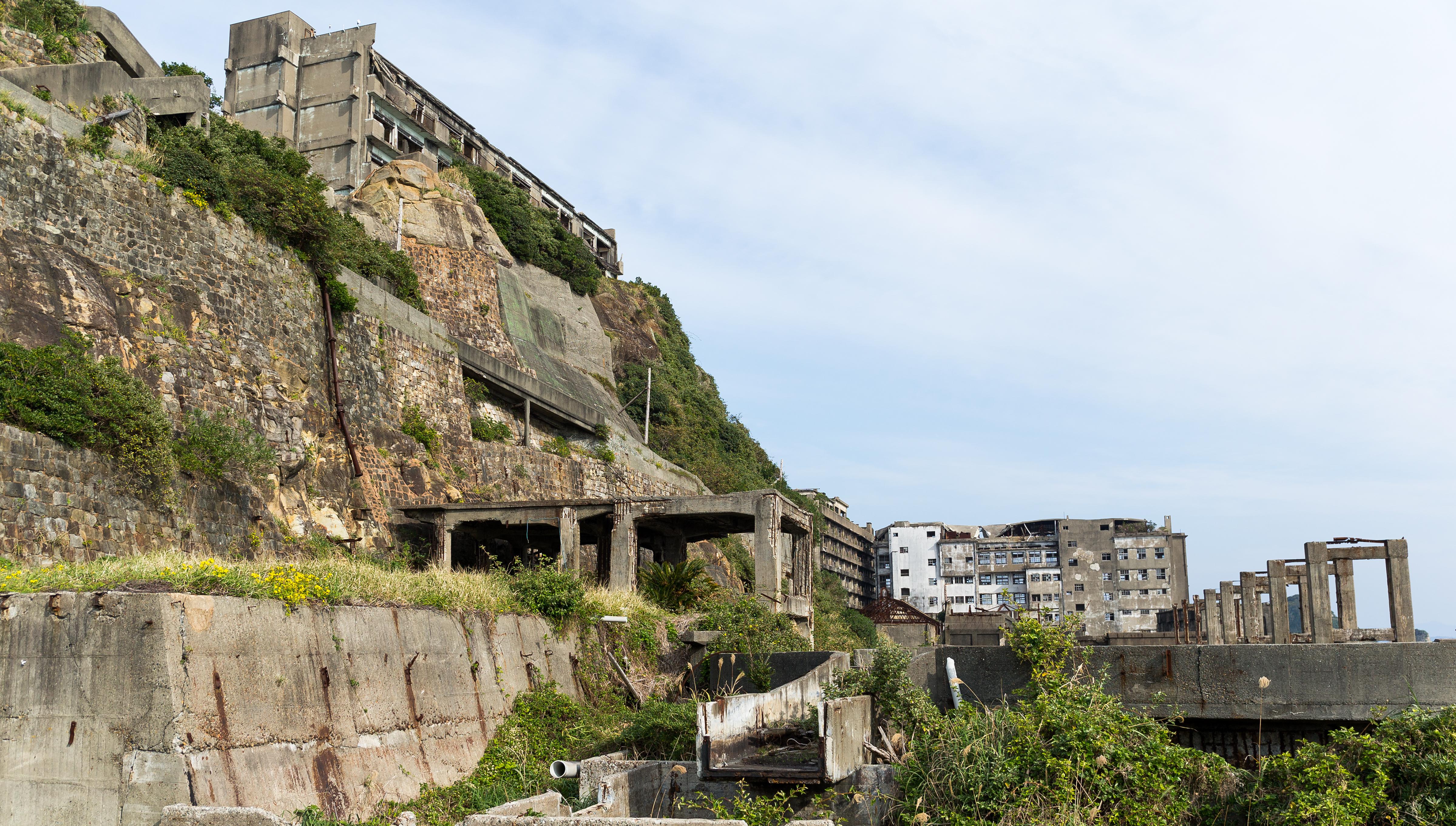
Hashima Island, also known as Gunkanjima or Battleship Island, is a stark reminder of nature's ability to reclaim even the most industrialized landscapes. Located off the coast of Nagasaki, Japan, Hashima was once a thriving coal mining facility, home to thousands of workers and their families. Abandoned in the 1970s when the coal ran out, the island's concrete structures have since been overtaken by vegetation. Trees and shrubs grow in the most unlikely places, sprouting from cracks in the pavement and atop crumbling buildings. The island's eerie silence is punctuated only by the sound of the wind and the occasional call of seabirds. Hashima's transformation from a bustling industrial hub to a ghostly ruin overgrown with greenery highlights the transient nature of human industry and the enduring strength of the natural world.
4. Ani, Turkey: The City of 1,001 Churches Slowly Fading Into the Wild

Once a flourishing medieval capital of the Armenian Kingdom, Ani was known as the "City of 1,001 Churches" and rivaled the greatest cities of its time. At its peak in the 10th and 11th centuries, it was home to over 100,000 people, adorned with grand palaces, bustling markets, and breathtaking cathedrals. However, after centuries of invasions, earthquakes, and shifting trade routes, Ani was abandoned and left to the elements. Today, this UNESCO World Heritage site is a haunting ghost town, where ancient stone churches and crumbling city walls stand like forgotten sentinels. Over time, grasses and wildflowers have reclaimed the once-thriving metropolis, softening the edges of its ruins with a veil of green. Birds nest in the towering remains of centuries-old churches, and the harsh Anatolian wind whistles through abandoned archways, giving Ani an eerie yet majestic presence.
5. Pyramiden, Norway: Arctic Abandonment
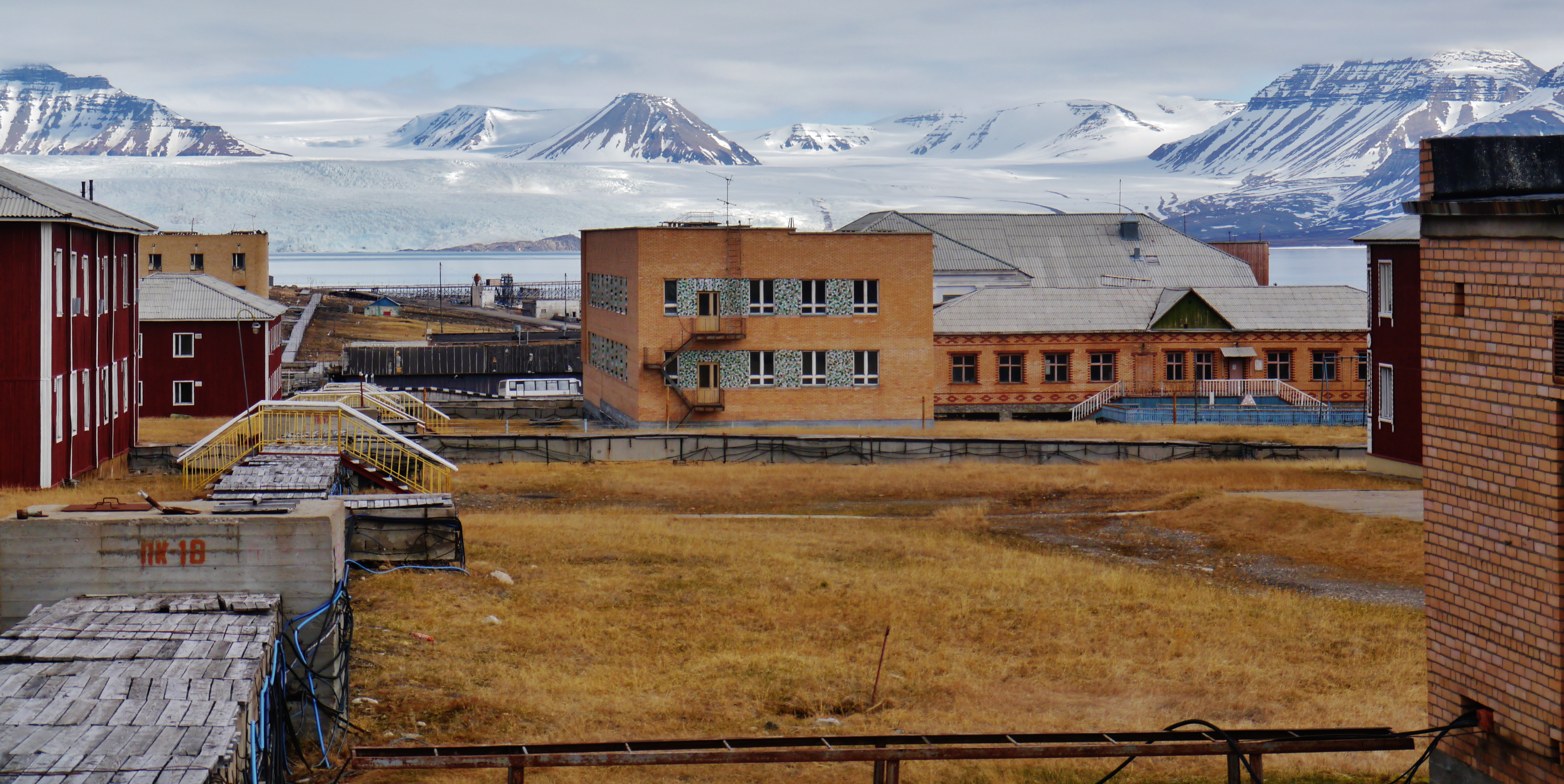
Pyramiden, an abandoned Soviet mining town in the Arctic archipelago of Svalbard, offers a unique glimpse into nature's ability to reclaim even the most remote and inhospitable environments. Once a bustling settlement, Pyramiden was abandoned in the late 1990s, leaving behind a collection of Soviet-era buildings slowly being overtaken by the harsh Arctic elements. Despite the extreme cold, nature has begun to reclaim the town, with moss and lichen covering the once-pristine facades and Arctic foxes and reindeer roaming the empty streets. The town's eerie silence is broken only by the howling wind and the occasional call of seabirds. Pyramiden's transformation from a thriving mining community to a ghost town reclaimed by nature serves as a powerful reminder of the impermanence of human endeavors and the enduring strength of the natural world.
6. Bodie, California: A Gold Rush Ghost Town
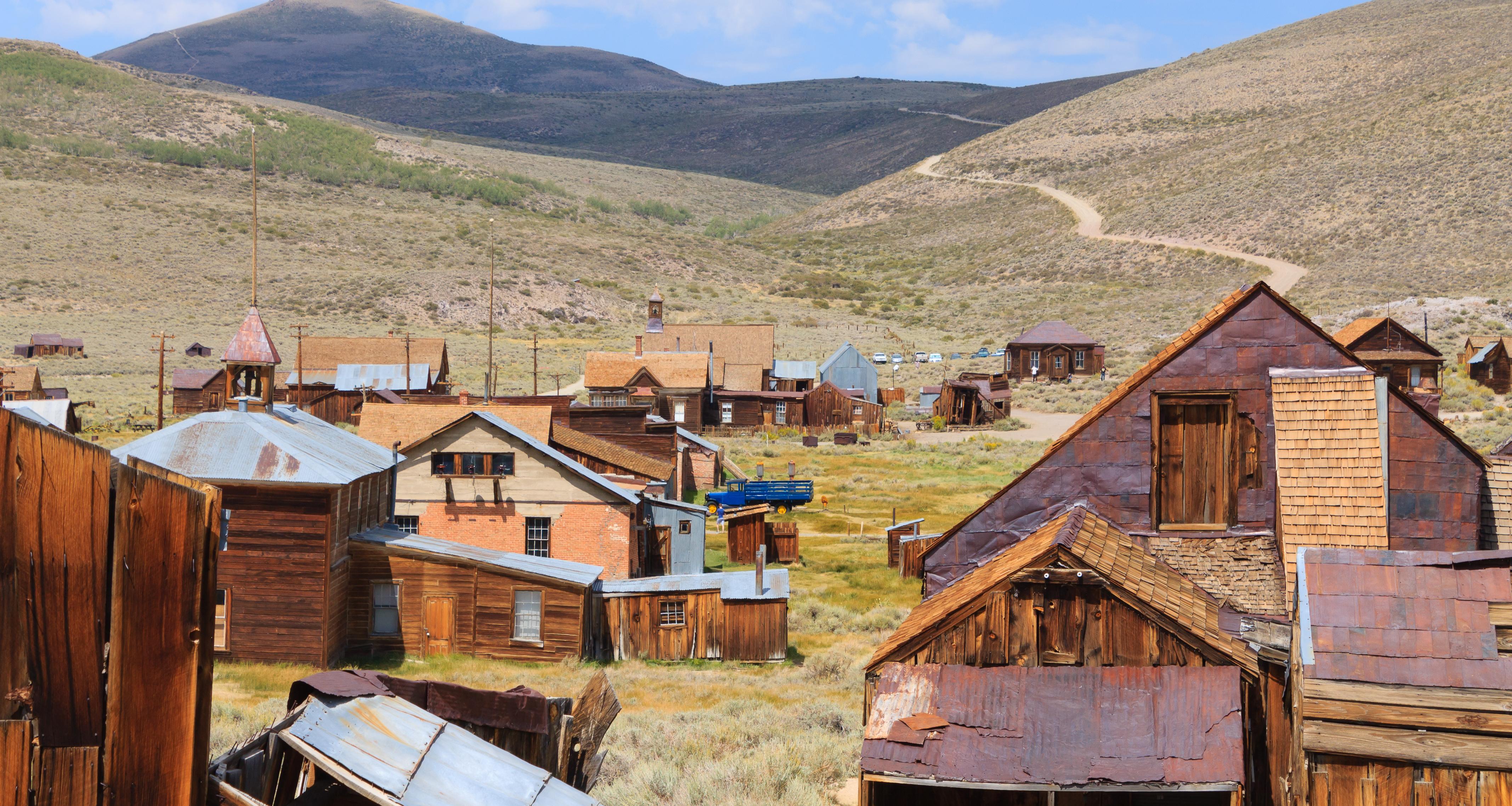
Bodie, California, once a bustling gold mining town, is now a well-preserved ghost town that offers a fascinating glimpse into the past. Abandoned in the early 20th century, Bodie has been left in a state of "arrested decay," with its buildings slowly being reclaimed by the elements. The town's wooden structures are weathered and worn, with the surrounding landscape slowly encroaching upon them. Despite the harsh desert conditions, nature has begun to reclaim the town, with sagebrush and wildflowers growing in the streets and wildlife returning to the area. Bodie's transformation from a thriving mining community to a ghost town reclaimed by nature serves as a poignant reminder of the transient nature of human endeavors and the enduring strength of the natural world.
7. Plymouth, Montserrat: The Pompeii of the Caribbean
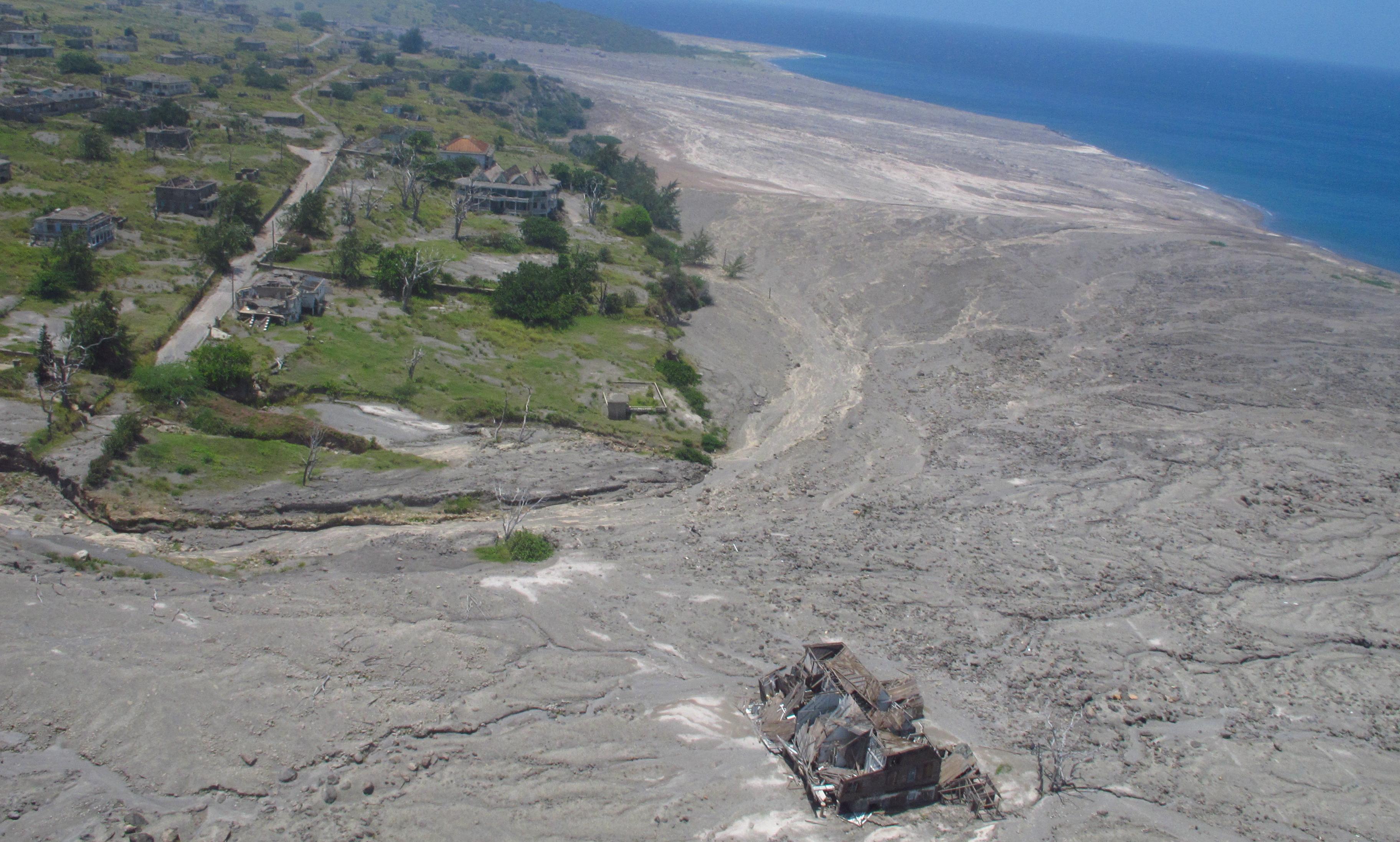
Unlike most abandoned cities, Plymouth, the former capital of Montserrat, was lost not to economic collapse or war, but to nature’s fury itself. In 1995, the Soufrière Hills volcano erupted violently, burying much of the town under thick layers of volcanic ash and lava flows. The city—once a bustling Caribbean hub—was permanently evacuated, leaving behind a ghostly ruin, frozen in time beneath a hardened layer of ash. In the years since, lush tropical vegetation has begun to reclaim what the volcano destroyed. Palm trees and vines creep through the skeletal remains of abandoned hotels, government buildings, and homes, while birds nest in the hollowed-out shells of cars left in the streets. Parts of the city are still dangerously unstable, and some buildings remain half-buried, their rooftops barely peeking out from beneath the ash.
8. Humberstone, Chile: The Ghostly Echoes of the Nitrate Boom
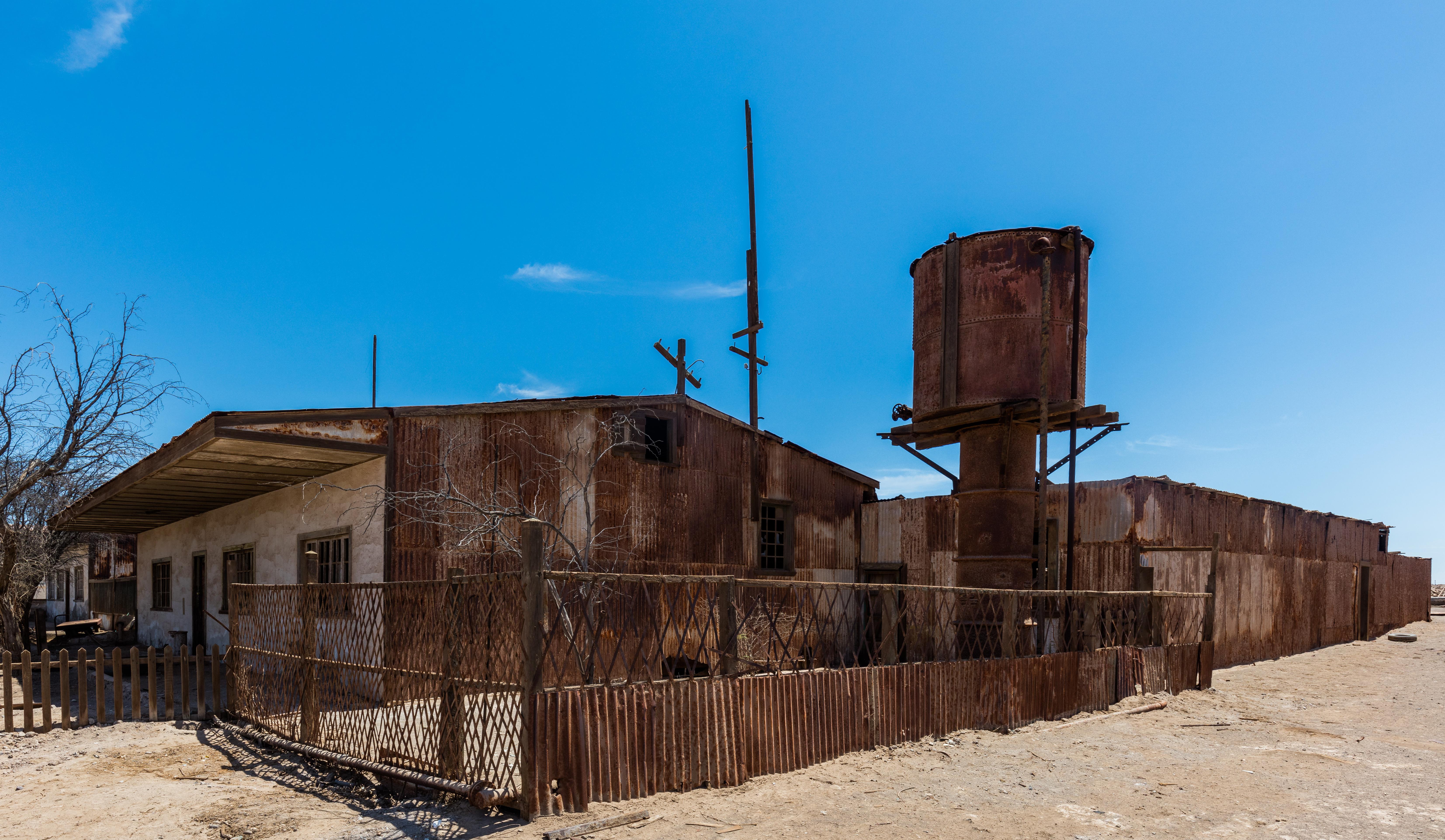
Humberstone, a former nitrate mining town in the Atacama Desert of Chile, offers a haunting glimpse into the past. Once a thriving community during the nitrate boom of the early 20th century, Humberstone was abandoned when the industry collapsed. Today, the town is a ghostly echo of its former self, with its buildings slowly being reclaimed by the desert. The harsh desert winds have weathered the wooden structures, and sand has begun to encroach upon the town. Despite the arid conditions, nature has begun to reclaim Humberstone, with cacti and desert plants growing in the streets and wildlife returning to the area. The town's transformation from a bustling mining community to a ghost town reclaimed by nature serves as a poignant reminder of the transient nature of human endeavors and the enduring strength of the natural world.
9. Craco, Italy: A Medieval Marvel in Ruins
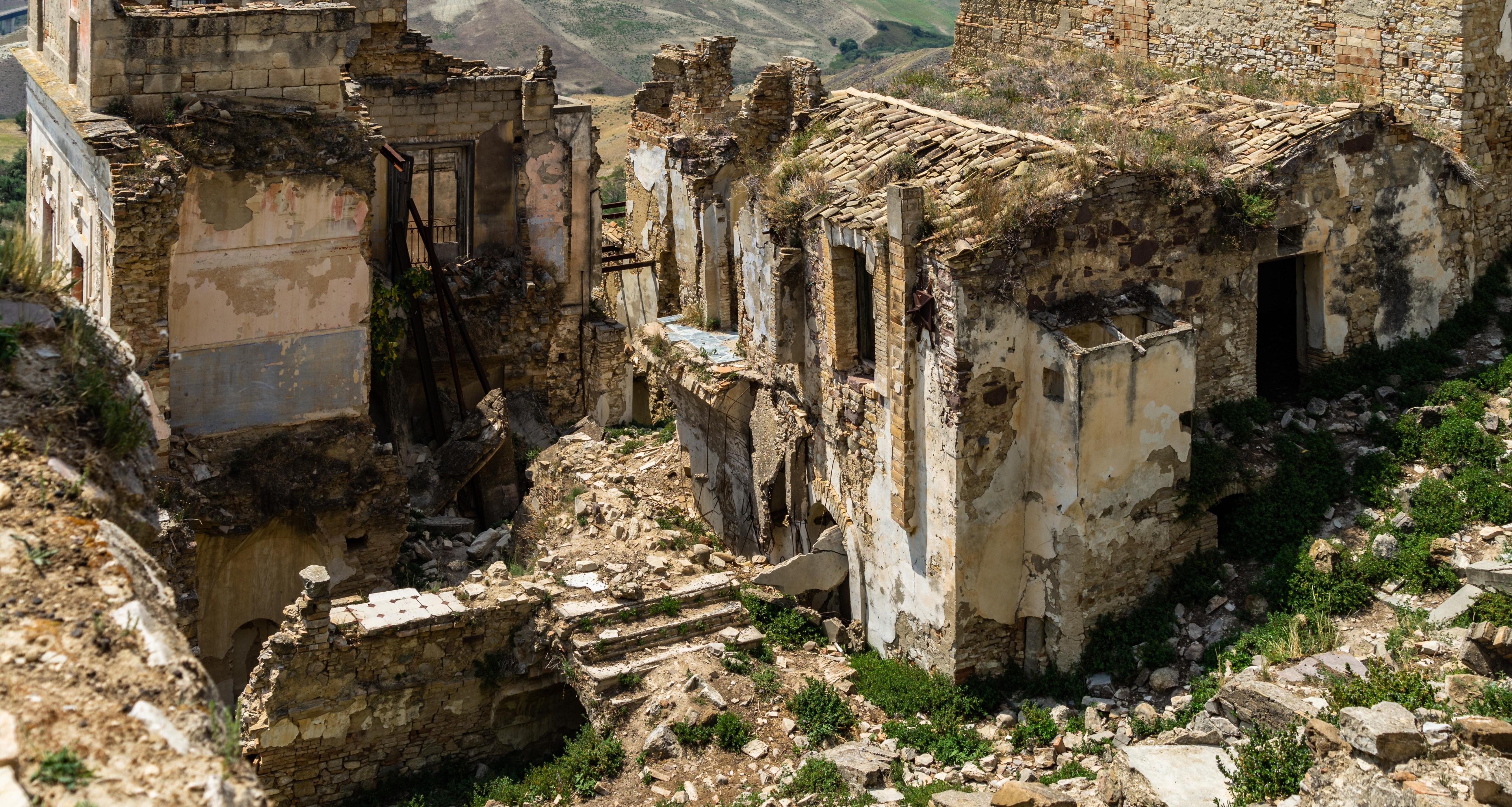
Craco, a medieval village in southern Italy, offers a stunning example of nature's ability to reclaim even the most ancient of settlements. Perched atop a hill, Craco was abandoned in the 20th century due to landslides and earthquakes. Today, the village is a hauntingly beautiful ruin, with its stone buildings slowly being overtaken by vegetation. Ivy and wildflowers spill over the crumbling walls, and the surrounding landscape encroaches upon the village. Despite its abandonment, Craco remains a popular tourist destination, drawing visitors with its stunning views and haunting beauty. The village's transformation from a thriving community to a ghost town reclaimed by nature serves as a powerful reminder of the impermanence of human endeavors and the enduring strength of the natural world.
10. Varosha, Cyprus: A Resort Town in Limbo

Varosha, a once-thriving resort town in Cyprus, stands as a poignant example of nature's ability to reclaim even the most luxurious of human settlements. Abandoned in 1974 during the Turkish invasion of Cyprus, Varosha has remained in a state of limbo ever since. The town's once-luxurious hotels and beachfront properties are now slowly being overtaken by vegetation, with trees and shrubs sprouting from cracks in the concrete and sand encroaching upon the streets. Despite its abandonment, Varosha remains a popular destination for urban explorers and photographers, drawn by its haunting beauty and the quiet reclamation of nature. The town's transformation from a bustling resort to a ghost town reclaimed by nature serves as a powerful reminder of the transient nature of human endeavors and the enduring strength of the natural world.
11. Kayaköy, Turkey: A Village of Stone and Silence

Kayaköy, a village in Turkey, offers a haunting example of nature's ability to reclaim even the most ancient of settlements. Once a thriving Greek community, Kayaköy was abandoned in the early 20th century following a population exchange between Greece and Turkey. Today, the village is a hauntingly beautiful ruin, with its stone buildings slowly being overtaken by vegetation. Ivy and wildflowers spill over the crumbling walls, and the surrounding landscape encroaches upon the village. Despite its abandonment, Kayaköy remains a popular tourist destination, drawing visitors with its stunning views and haunting beauty. The village's transformation from a thriving community to a ghost town reclaimed by nature serves as a powerful reminder of the impermanence of human endeavors and the enduring strength of the natural world.
12. Houtouwan, China: The Green Village

Houtouwan, a former fishing village on Shengshan Island in China, offers a stunning example of nature's ability to reclaim even the most modern of settlements. Abandoned in the 1990s due to economic decline, Houtouwan has been slowly overtaken by vegetation. The village's buildings are now shrouded in ivy and moss, and the streets are carpeted with wildflowers and grasses. Despite its abandonment, Houtouwan remains a popular destination for urban explorers and photographers, drawn by its haunting beauty and the quiet reclamation of nature. The village's transformation from a thriving community to a ghost town reclaimed by nature serves as a powerful reminder of the transient nature of human endeavors and the enduring strength of the natural world.
13. San Juan Parangaricutiro, Mexico: A Church Rising From a Sea of Lava
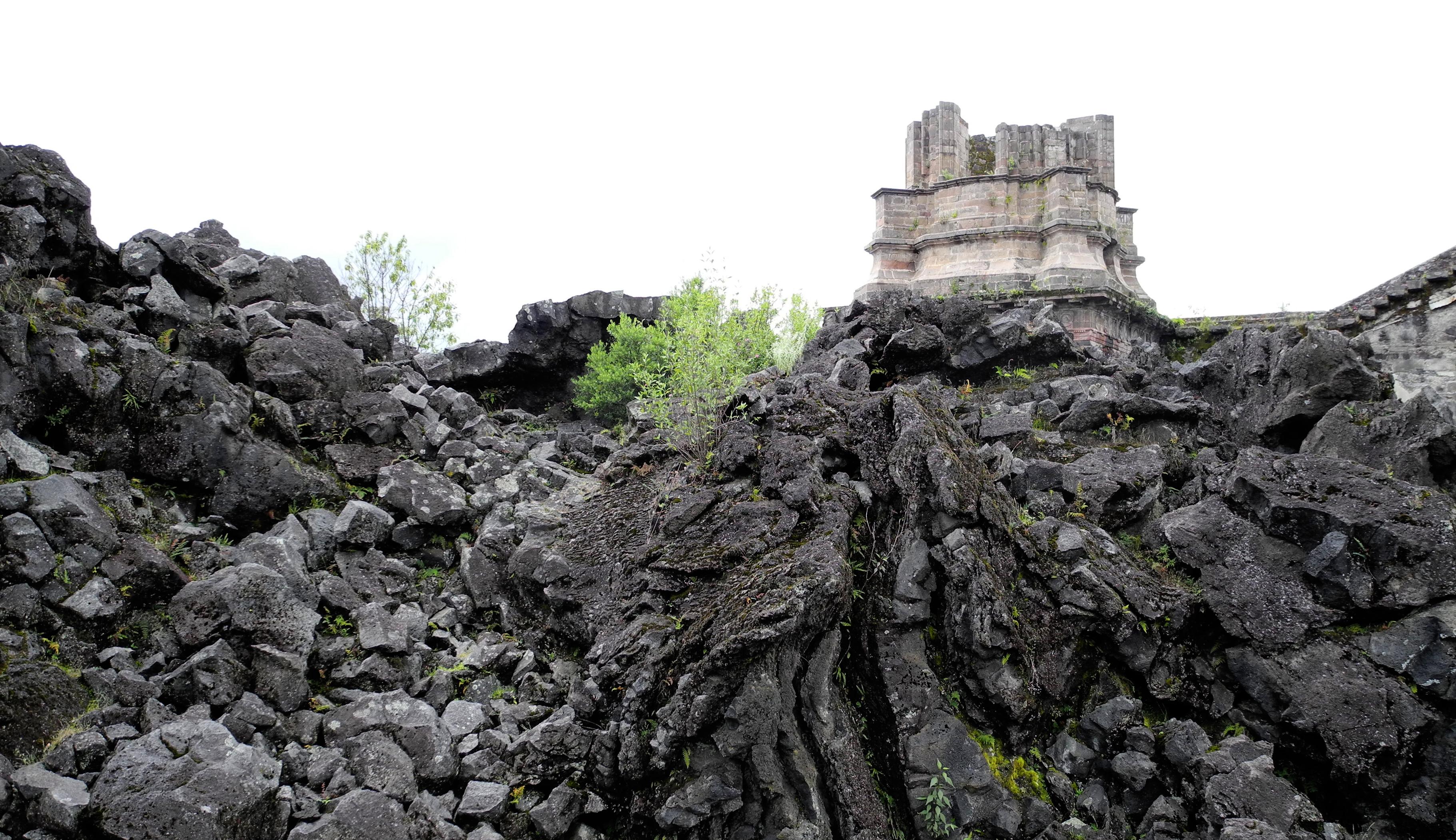
Unlike any other abandoned town in the world, San Juan Parangaricutiro was swallowed not by time, but by lava. In 1943, a farmer witnessed the birth of a volcano—Parícutin, one of the youngest volcanoes on Earth. Over the next nine years, lava flows engulfed everything in their path, burying the town beneath a thick, blackened crust. The town’s entire landscape transformed overnight, with only one eerie remnant standing above the hardened lava fields: the ruins of the church of San Juan Parangaricutiro. Its stone bell towers still rise defiantly above the sea of cooled volcanic rock, a surreal sight that draws visitors from around the world. Today, cacti, moss, and small shrubs grow from the cracks in the lava, and birds nest in the old church walls. The area remains a monument to the unstoppable forces of nature, and visitors can now walk across the hardened lava to witness this ghostly church standing as the last testament to a town that once was.
14. Dhanushkodi, India – A Town Erased by the Sea
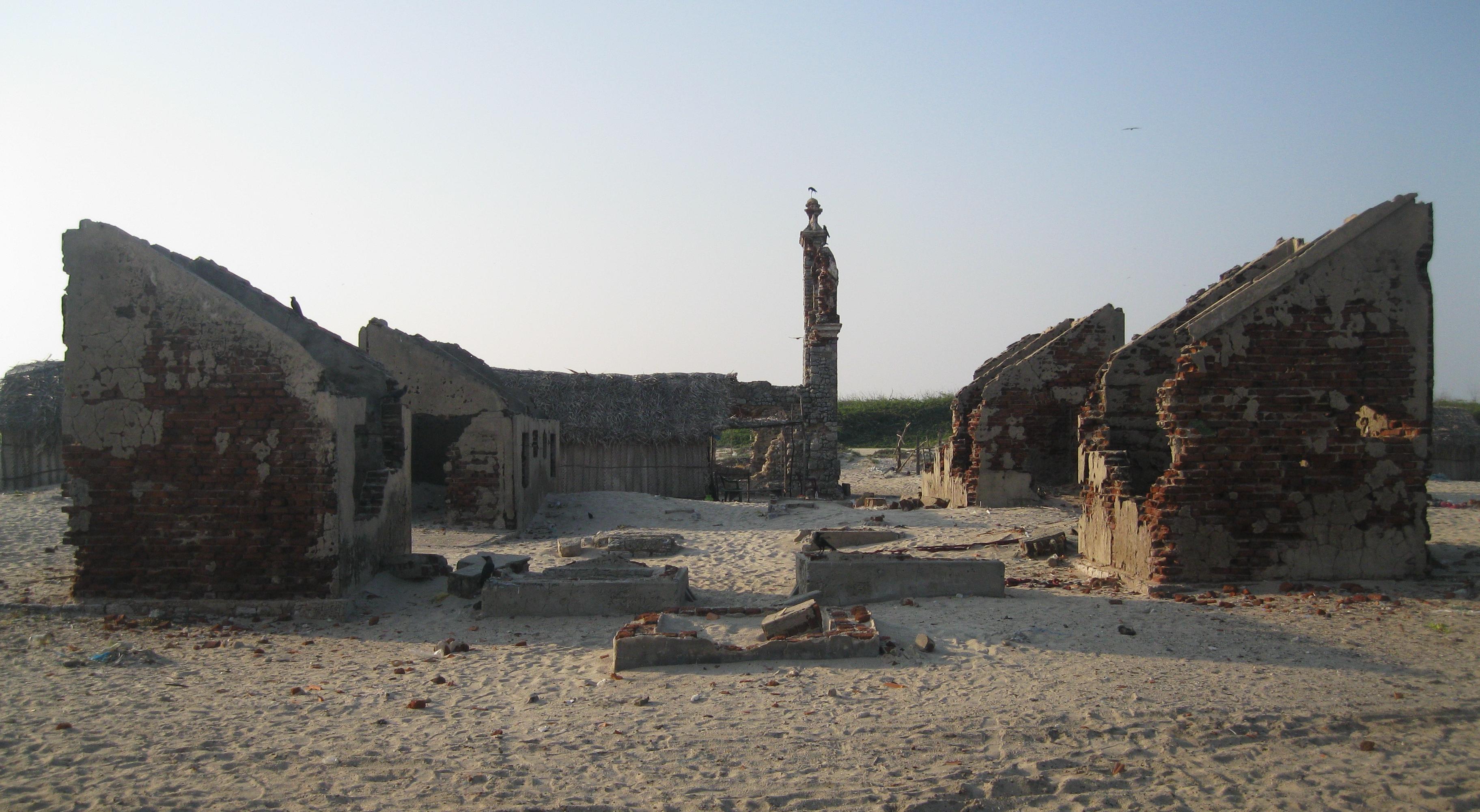
At the southernmost tip of India, where the Bay of Bengal meets the Indian Ocean, lies Dhanushkodi, a ghost town swallowed by nature’s fury. Once a thriving port town with railway connections, schools, post offices, and a bustling marketplace, Dhanushkodi met its tragic fate in 1964, when a monstrous cyclone struck with winds exceeding 280 km/h (174 mph). The storm surge washed away nearly everything in its path, including a passenger train carrying over 100 people, leaving behind nothing but devastation. The town was deemed uninhabitable, and survivors were forced to abandon it forever. Today, Dhanushkodi is a surreal wasteland of skeletal ruins buried in sand dunes, with only the remains of old churches, railway stations, and homes whispering stories of its past. Nature has tightened its grip on the town, with the relentless sea continuing to erode its coastline and shifting sands slowly swallowing what’s left. The eerie silence of the town is interrupted only by the sound of crashing waves, the cries of seabirds, and the occasional gust of wind sweeping through its ruins.
15. Balestrino, Italy – The Ghost Town in the Hills
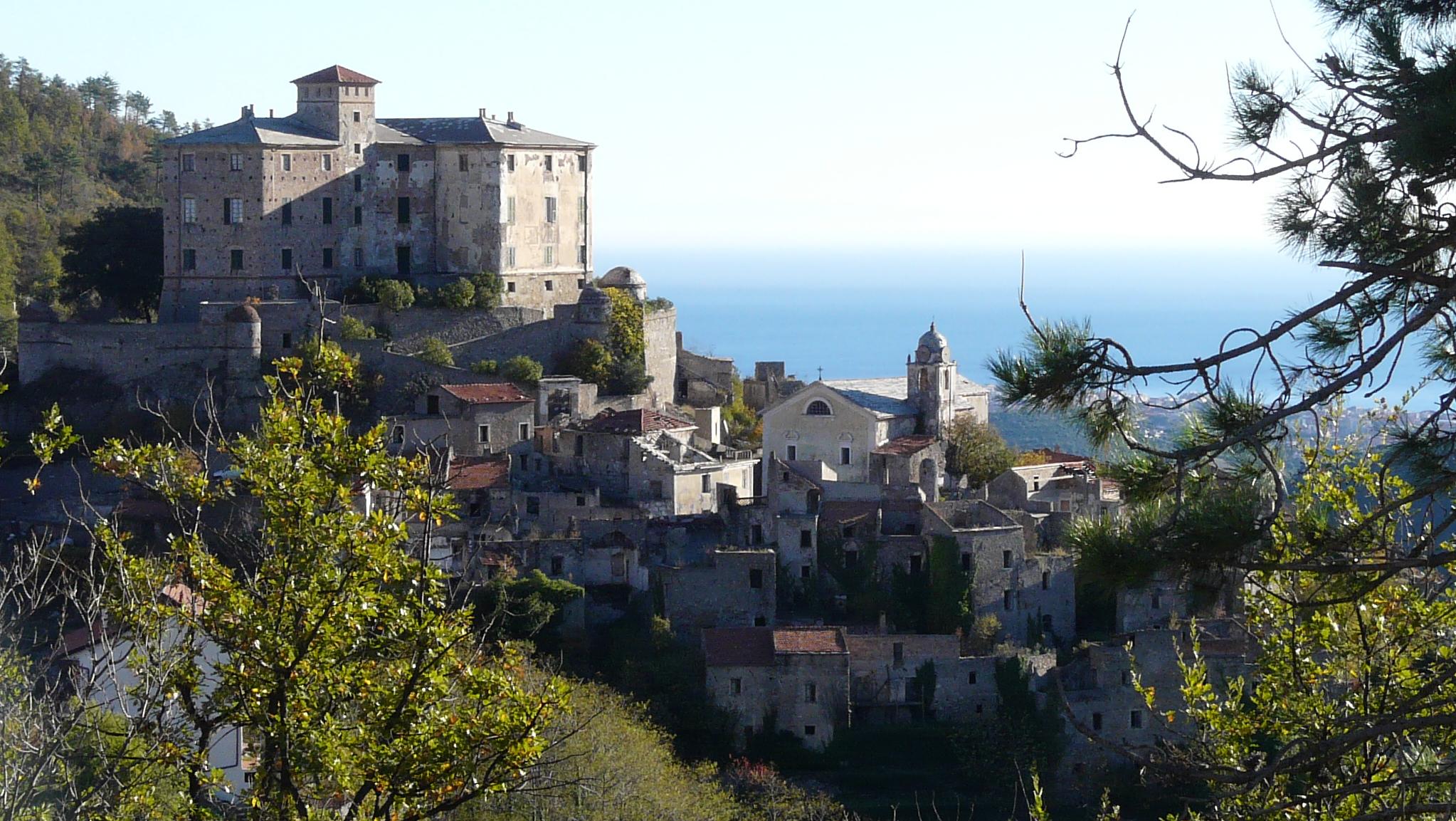
Hidden in the hills of Liguria, Italy, the ancient village of Balestrino was once home to generations of farmers and artisans. Its history dates back to at least the 11th century, and its medieval stone houses, winding alleys, and towering church made it an architectural gem. However, Balestrino’s idyllic existence was shattered in the mid-20th century, when a series of relentless earthquakes left it structurally unsafe for habitation. The town’s foundations weakened, and residents were forced to flee, abandoning their homes, churches, and marketplaces. Decades later, Balestrino remains frozen in time, an eerie yet beautiful reminder of a forgotten past. Ivy and moss have overtaken its ancient stone buildings, creeping up walls and breaking through cracks in its cobbled streets. Windows stare out like hollow eyes, and doorways lead to empty interiors where nature has begun to take root. The silence of the village is occasionally broken by the sound of birds nesting in the ruins or the wind whispering through narrow passageways.
16. Tyneham, England – A Village Left to the Birds
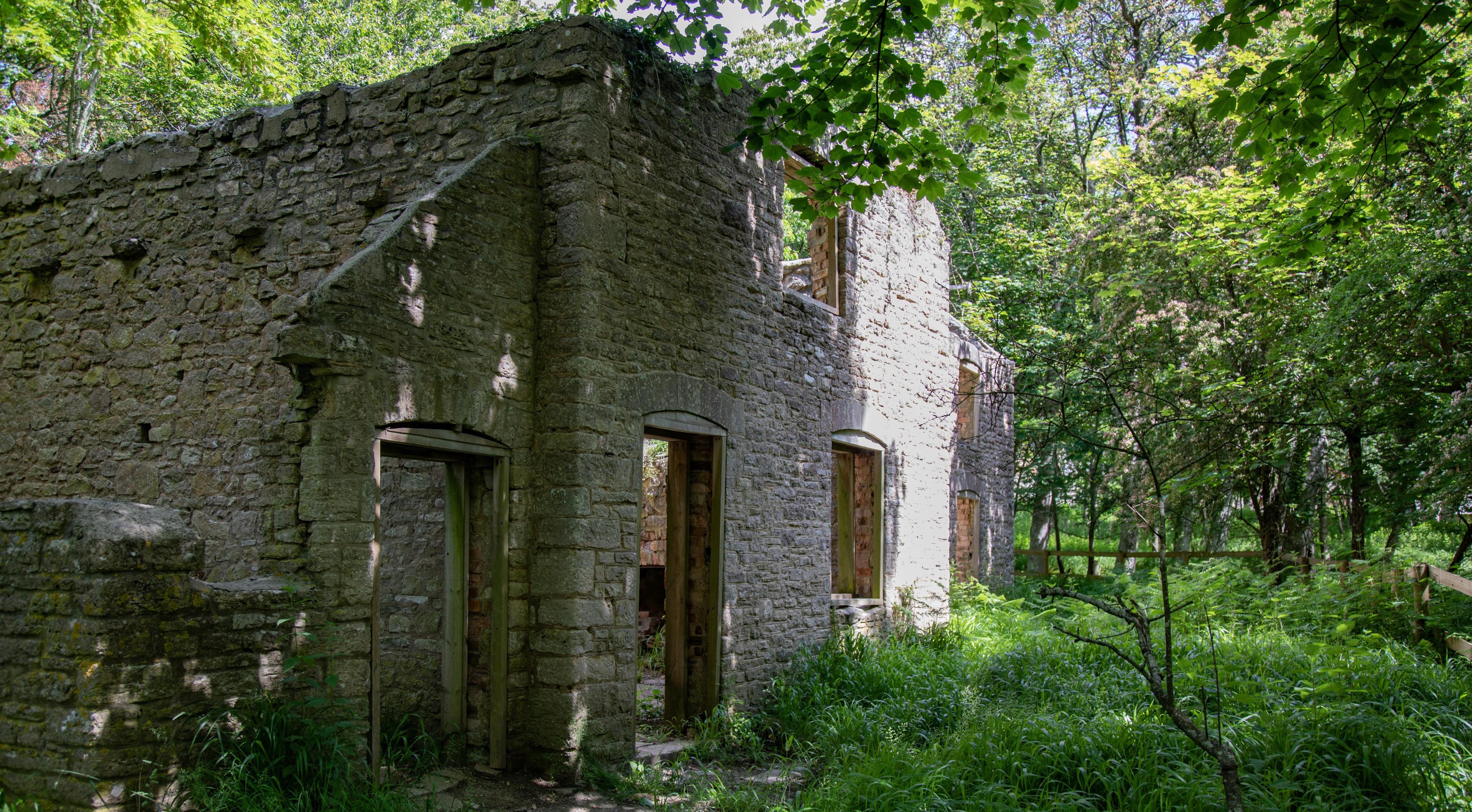
In December 1943, as World War II raged across Europe, the small English village of Tyneham was abruptly emptied. The British government requisitioned the land for military training exercises, promising residents they could return after the war. But the war ended, and the villagers were never allowed back—leaving Tyneham frozen in time. Today, this abandoned village on the Dorset coast is a hauntingly beautiful relic of the past, slowly being reclaimed by the wilderness. The old schoolhouse still stands, with children’s workbooks and chalkboards left exactly as they were in the 1940s. The stone cottages, once filled with life, now have collapsed roofs, with wildflowers growing where floors once lay. The church remains intact, though its pews are empty, and birds nest where congregations once gathered. Nature has taken full advantage of the absence of humans. Deer roam freely through the village, and birds fill the air with their calls. The fields that once supported farmers are now lush with wild grasses, and the sound of the waves from the nearby coastline completes the village’s serene yet eerie atmosphere.
17. Villa Epecuén, Argentina – A Drowned Town Resurfaced

Once a thriving resort town on the shores of Laguna Epecuén, Villa Epecuén was Argentina’s answer to the Dead Sea. The lake’s mineral-rich waters were believed to have healing properties, attracting thousands of tourists every year. Luxurious hotels, bustling markets, and lively promenades made it a popular getaway for those seeking relaxation and rejuvenation. But in 1985, disaster struck—heavy rains caused the salt lake to overflow, breaking through protective barriers and submerging the entire town under 30 feet of water. For 25 years, Villa Epecuén remained lost beneath the surface, its buildings, streets, and memories hidden beneath a saline grave. However, in the early 2000s, as water levels began to recede, the ghostly remnants of the town emerged from their watery tomb. What remained was a landscape unlike any other—a skeletal, salt-encrusted wasteland, where crumbling structures stand coated in a thick layer of white mineral deposits, making the town look like an apocalyptic frozen world.
18. Old Perithia, Greece – A Venetian Ruin in the Mountains
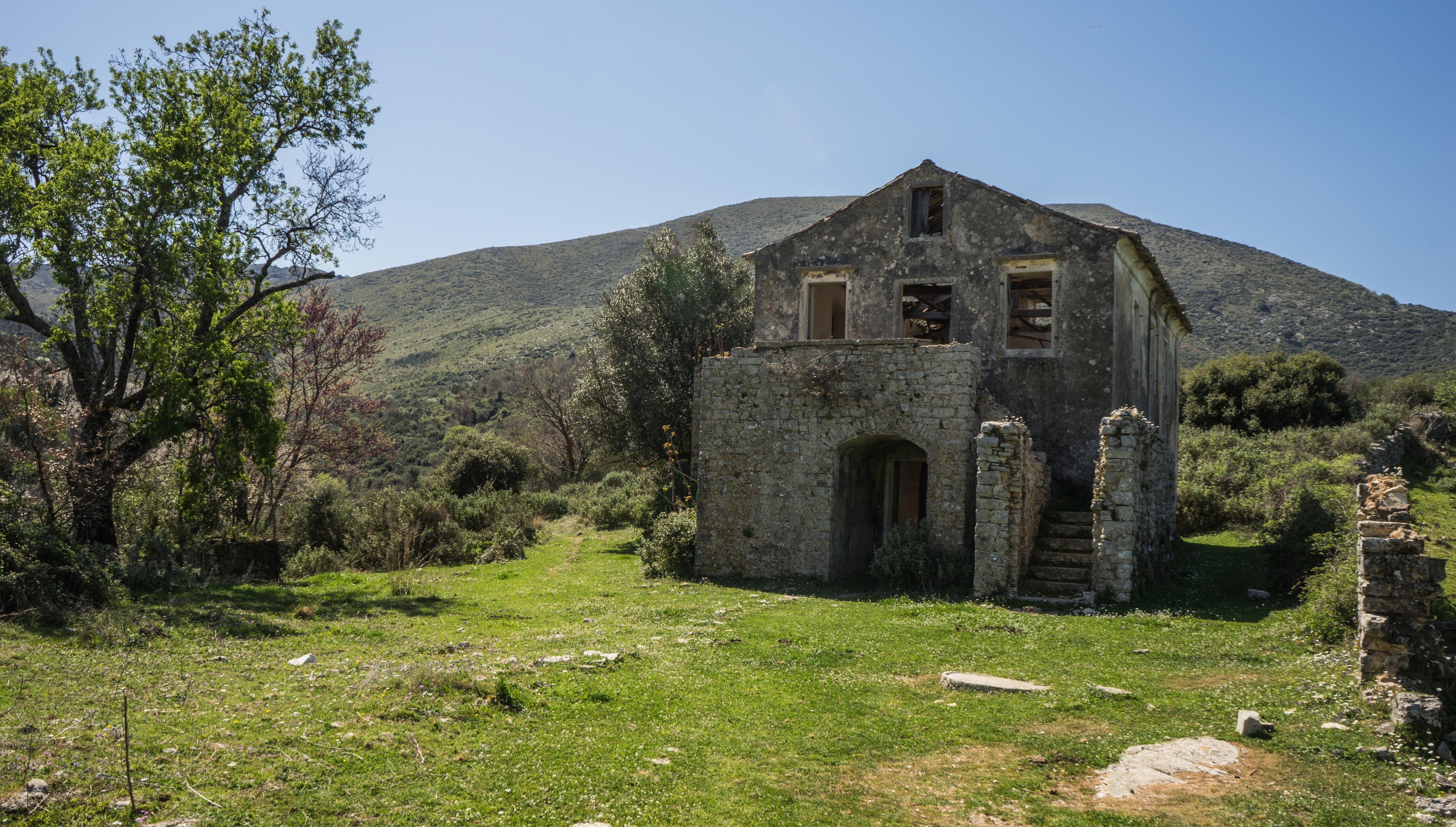
Nestled high in the rugged mountains of Corfu, Old Perithia is a hauntingly beautiful relic of a bygone era. Once a wealthy and bustling Venetian settlement, this village thrived during the 14th and 15th centuries, offering its residents protection from pirate raids that plagued the coastal areas of the Ionian Islands. The town’s unique position allowed it to prosper for centuries, with its cobbled streets lined by elegant stone mansions, ornate churches, and bustling tavernas. However, as tourism flourished along Corfu’s coastline in the 20th century, residents gradually abandoned Old Perithia in favor of more modern amenities and economic opportunities by the sea. Today, time has nearly swallowed the village whole, leaving it in a state of quiet decay. Stone houses stand roofless and weathered, their wooden beams long since rotted away, while ivy and wildflowers weave through the cracks in the walls. Ancient churches, with frescoes fading from centuries of exposure, serve as eerie reminders of the town’s once-vibrant community. The only permanent inhabitants now are the occasional herds of goats and sheep that graze in the surrounding hills, their bells clanging in the otherwise silent village.
19. Belchite, Spain – The Remains of a Civil War Battlefield

The Spanish Civil War left behind scars that are still visible today, and nowhere is this more evident than in the ghostly ruins of Belchite, a town reduced to rubble in 1937. Once a thriving community in northeastern Spain, Belchite became a battleground between Republican and Nationalist forces during one of the war’s most brutal sieges. Over a two-week period, thousands of lives were lost as bombs, artillery, and machine-gun fire tore through its streets, leaving behind nothing but shattered buildings and eerie silence. Rather than rebuild, Spain’s post-war government chose to leave Old Belchite untouched as a permanent reminder of the war’s devastation. Over the decades, nature has begun reclaiming what was once a vibrant town. Weeds and wildflowers push up through the cracked streets where soldiers once fought. Bullet-ridden church towers stand precariously against the sky, their once-grand facades now crumbling under the weight of time. Inside what remains of homes, vines snake through shattered windows, and the rusted remnants of doors hang from broken hinges, whispering stories of a past forever frozen in time.
20. Oradour-sur-Glane, France – A Village Preserved in Tragedy
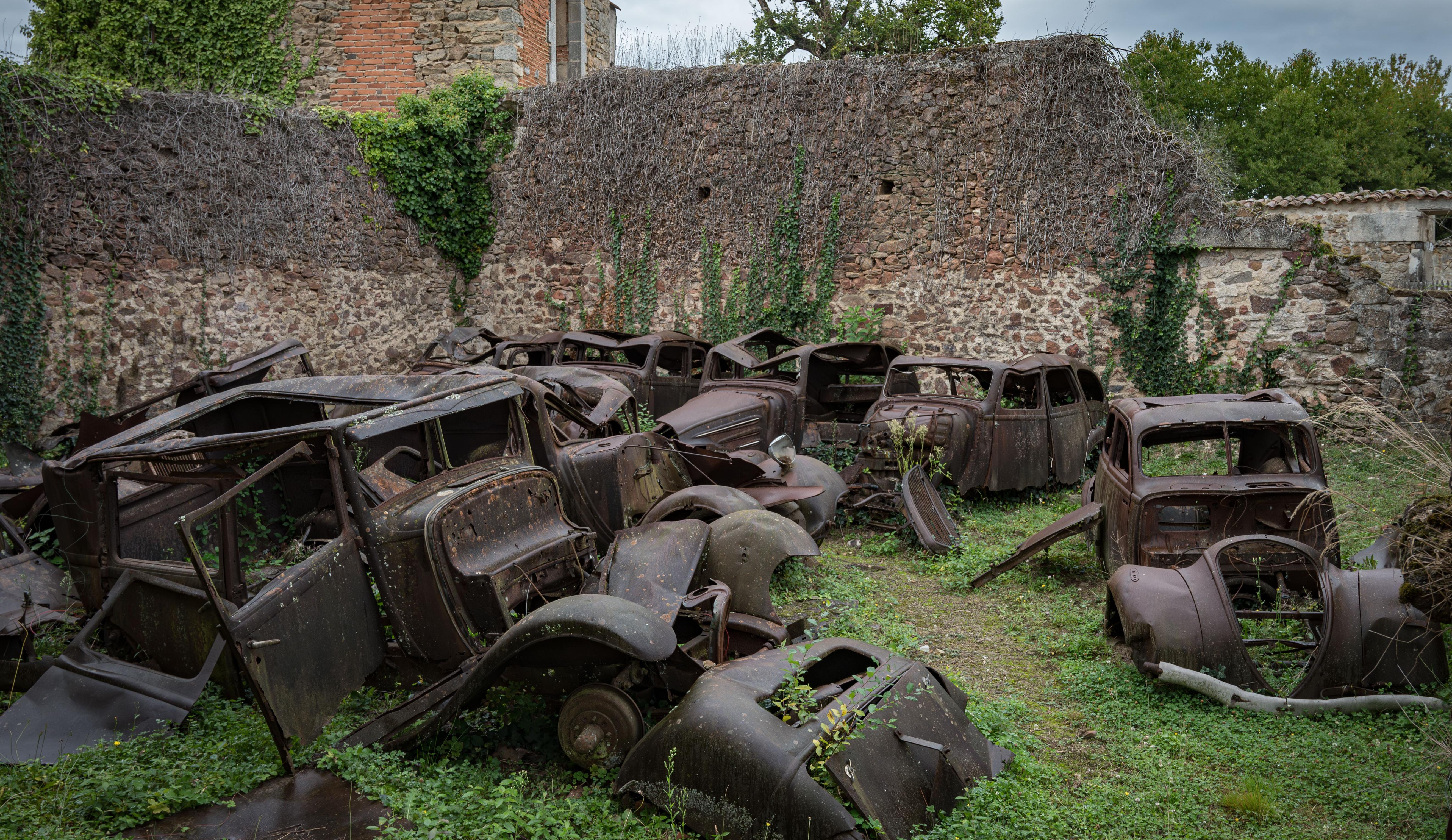
Few abandoned towns carry a heavier weight of sorrow than Oradour-sur-Glane, a once-picturesque French village that became the site of one of World War II’s most horrific massacres. On June 10, 1944, Nazi SS troops descended upon Oradour, rounding up all 642 residents—men, women, and children—and executing them in one of the worst war crimes committed on French soil. Homes were set ablaze, the village was looted, and the bodies of its inhabitants were left among the ruins. Unlike many war-torn areas that were rebuilt after WWII, Oradour-sur-Glane was left exactly as it was that fateful day, preserved as a memorial to those who perished. Walking through the village today is an unsettling experience—rusted bicycles lean against scorched walls, the remnants of a burned-out car still sit in the main square, and store signs hang from facades that will never again see customers. The once-lively streets are now overgrown with grass, and trees have taken root in the ruins of homes, their branches stretching through shattered windows.
21. Akarmara, Abkhazia – A Soviet Utopia Turned Jungle

In the heart of the Caucasus, hidden within the disputed territory of Abkhazia, lies the crumbling Soviet-era mining town of Akarmara. Once envisioned as an industrial utopia during the Soviet Union’s expansion, Akarmara was built to house coal miners and their families in the mid-20th century. At its peak, it was a thriving community, complete with grand apartment complexes, schools, and cultural centers. However, the collapse of the Soviet Union in the early 1990s, followed by the devastating Abkhaz–Georgian War, led to the town’s abandonment. Today, Akarmara is a surreal mix of Brutalist Soviet architecture and untamed wilderness. Towering apartment blocks stand in eerie silence, their balconies now occupied by trees instead of residents. Vines drape over rusting stairwells, and moss carpets the once-grand halls of Soviet administrative buildings. In the absence of human activity, wildlife has reclaimed the area, with bears and wild boars occasionally wandering through what were once bustling streets. The town, designed as a symbol of Soviet progress, has instead become a living monument to nature’s quiet resilience.
22. Fordlandia, Brazil – Henry Ford’s Failed Jungle Utopia
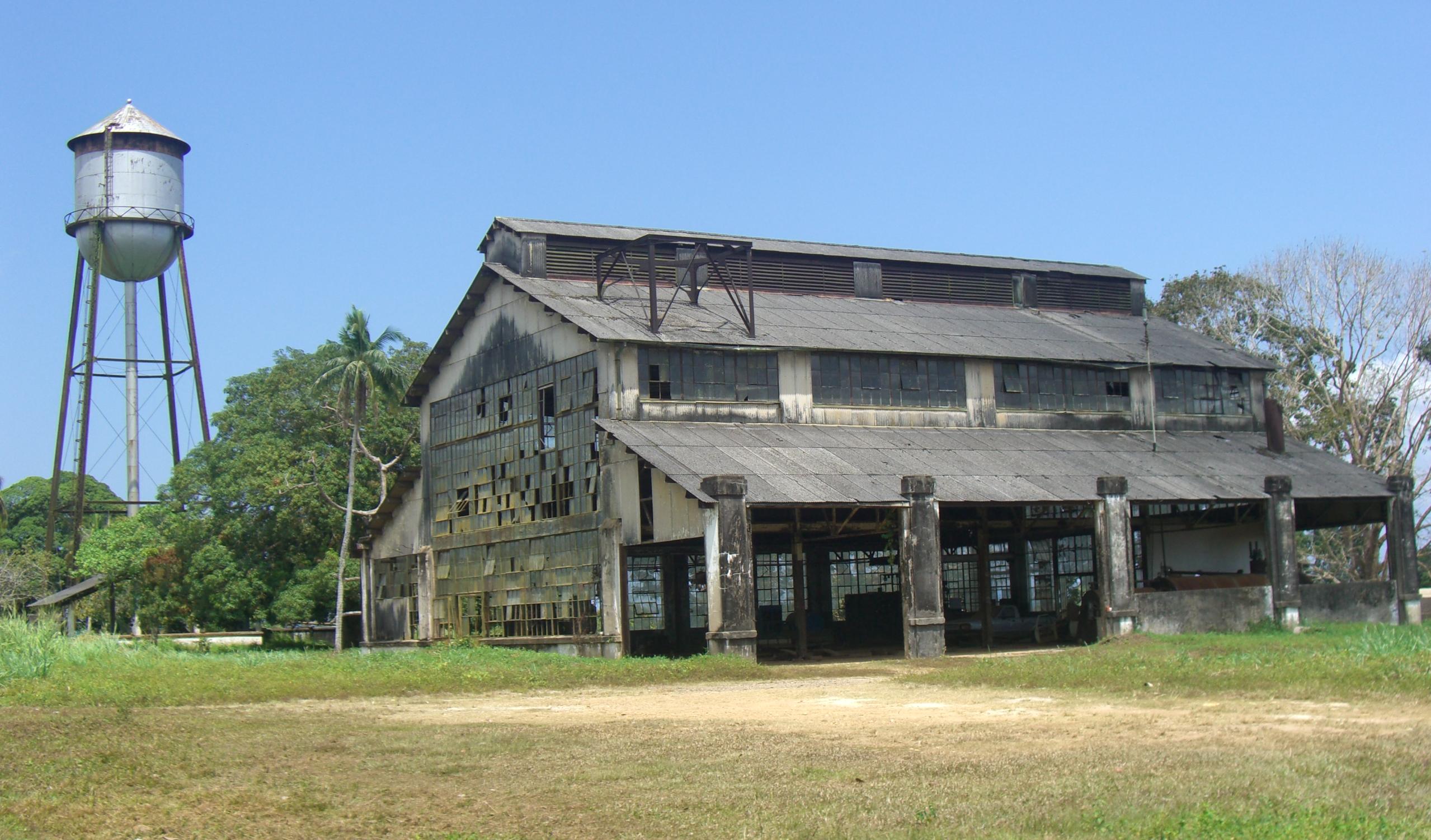
In the heart of the Amazon rainforest lies Fordlandia, an ambitious but ultimately doomed industrial town founded by Henry Ford in the 1920s. Ford envisioned a rubber-producing colony that would supply latex for his automobile empire while introducing American values and lifestyle to the Brazilian jungle. He built a modern town complete with paved roads, a hospital, a school, and even a golf course. However, Ford's vision clashed with the harsh reality of the Amazon. The tropical climate, disease, and resistance from indigenous workers led to the project's failure. By the 1940s, Fordlandia was abandoned, its buildings left to decay under the relentless Amazonian growth. Today, Fordlandia stands as an eerie industrial ruin in the jungle, with rusted machinery overtaken by vines, empty houses swallowed by thick vegetation, and the remains of an abandoned factory crumbling under the weight of time. The jungle has reclaimed most of what Ford built, but visitors can still wander through cracked sidewalks, explore remnants of the sawmill, and see where Ford’s dream faded into one of the most fascinating failed experiments in urban planning.
23. Ross Island, India – The Jungle’s Silent Takeover

Once the administrative headquarters of the British in the Andaman and Nicobar Islands, Ross Island was a thriving colonial settlement in the 19th and early 20th centuries. Lavish bungalows, a grand church, a printing press, and even a ballroom made it a picture of British elegance. However, after an earthquake in 1941 and subsequent Japanese occupation during World War II, the British never fully reclaimed the island, and it was eventually abandoned. Now, Ross Island is a mesmerizing example of nature reclaiming human ambition. Gigantic banyan tree roots wrap around and strangle the remnants of colonial buildings, their twisted limbs creeping through abandoned homes and administrative offices. Parrots, deer, and peacocks roam freely, while the jungle slowly swallows what remains of British rule. Once a symbol of imperial power, Ross Island now stands as a haunting yet beautiful testament to nature’s quiet resilience.
A Future Where Nature and Humanity Coexist
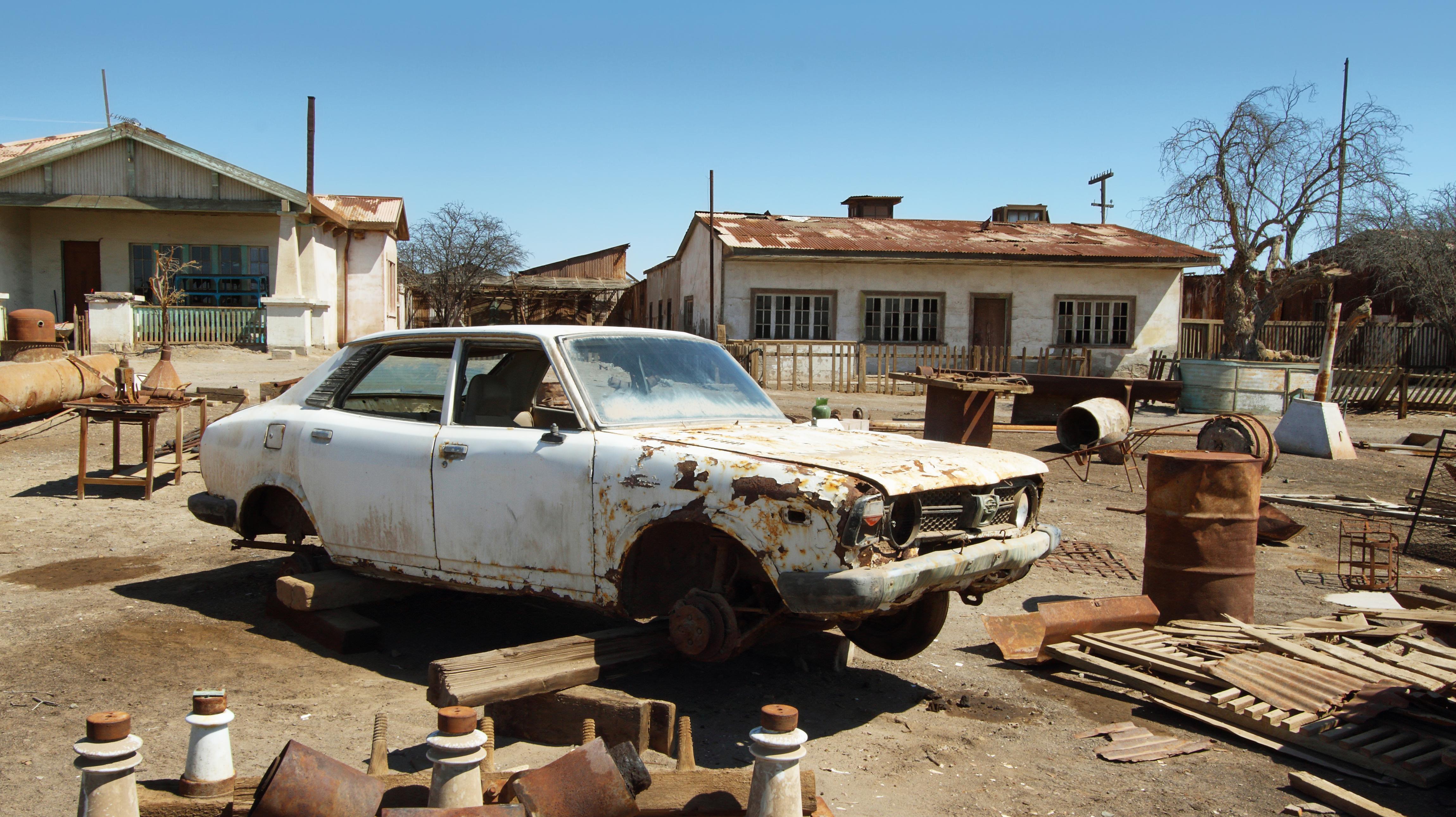
As we walk through these forgotten cities—whether in reality or through the echoes of history—they serve as powerful reminders that nature is always waiting. The relentless jungle, the creeping sand, the quiet return of wildlife—all proof that no matter how mighty human ambition may seem, the earth reclaims what it pleases. These 23 abandoned places are not just eerie remnants of the past; they are living testaments to the resilience of the natural world. Perhaps, in these ruins, we find a humbling lesson: civilizations rise and fall, but nature endures. The silence of Pripyat, the sunken streets of Villa Epecuén, the sand-filled rooms of Kolmanskop—each whispers a story of impermanence, adaptation, and rebirth. As we continue to expand our cities, may we remember these places not as warnings, but as inspiration to live in harmony with a world far older—and far more patient—than us.

